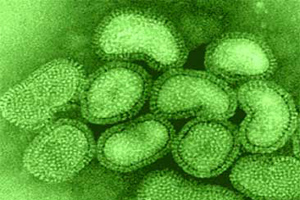Research: Wind’s contribution to Avian Influenza spread

Wind is estimated to contribute around 18% to the spread of Avian Influenza following an outbreak, a Dutch study to be published in the Journal of Infectious Diseases suggests.
Outbreaks of highly pathogenic avian influenza in poultry can cause severe economic damage and represent a public health threat. Development of efficient containment measures requires an understanding of how these influenza viruses are transmitted from one farm to the next. However, the actual mechanisms of inter-farm transmission are largely unknown.
Dispersal of infectious material by wind has been suggested but never demonstrated as a possible cause of transmission between farms. Statistical evidence has been provided that the direction of spread of avian influenza A(H7N7) is correlated with the direction of wind at date of infection. Research was conducted by reconstructing the transmission tree for a large outbreak in the Netherlands in 2003 using detailed genetic and epidemiological data. It was conservatively estimated that the contribution of a possible wind-mediated mechanism to the total amount of spread during this outbreak could be around 18%.
“Wind-related spread of avian influenza has direct consequences for containment efforts. Farms emit vast quantities of particulate matter, which could well carry viable virus. Several systems, such as air scrubbers, water or oil sprinkling, changes in ventilation rate, and ionization systems have been shown to reduce dust concentrations and could be an efficient way to stop infectious particles from getting in or out. Alternative wind-related mechanisms cannot be excluded on the basis of our analysis. Wild birds or insects acting as vectors for the disease, flying preferentially in the direction of the wind, would explain our observations as well, but call for different control strategies.
“Furthermore, culling strategies may take into account the role of wind. First, care should be taken to ensure contaminated material does not get into the environment during culling activity. Second, wind direction should be taken into account when estimating the risk of infection for farms; the most efficient culling order will first target those farms that are at higher risk of infection and, when infected, will pose higher risks to other farms themselves. Thus, increased knowledge of which farms are at risk, provided by current and forecasted wind direction, allows for a more efficient culling strategy.”













